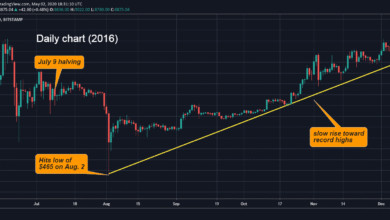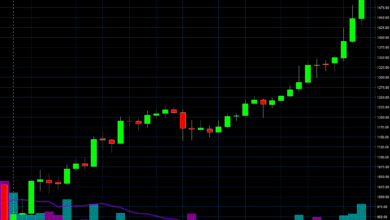U.S.-China Tariff Cuts Help Holiday Shopping Efficiency

The recent U.S.-China tariff cuts, even if only temporary for a 90-day period, bring a significant relief to consumers and retailers alike, especially with the crucial Christmas season approaching. As nearly one-fifth of U.S. retail sales last year stemmed from holiday shopping, these reductions may help alleviate some of the burdens faced by American shoppers. Retailers, who typically depend heavily on import products, are hoping to overcome supply chain issues caused by previous tariffs on imports, which disrupted the flow of goods. The possibility of accessing affordable Chinese exports to the U.S. could prevent a frustrating shortage of Christmas presents this year. However, lingering tariffs on certain goods imply that challenges remain as businesses prepare for the busiest shopping period of the year.
In the wake of the recently announced tariff reductions between the U.S. and China, the impact on consumer markets could be quite significant, especially as the holidays loom nearer. The temporary easing of import duties addresses pressing concerns about product availability, particularly regarding festive shopping. As millions of American families gear up to purchase holiday gifts, retailers are looking for ways to mitigate the negative effects of extended tariffs on their inventory and pricing strategies. Furthermore, the ongoing tension in trade agreements between these two economic giants has put a spotlight on international supply relationships, raising concerns among businesses that rely heavily on timely and cost-effective delivery of goods from overseas. This scenario underscores the importance of stable trading conditions in maintaining a healthy retail landscape.
The Impact of U.S.-China Tariff Cuts on Holiday Shopping
The recent U.S.-China tariff cuts have come at a crucial time, addressing an imminent hurdle for consumers and retailers alike: the purchase of Christmas presents. With nearly one-fifth of U.S. retail sales occurring during the holiday season, the significance of timely and affordable product availability cannot be overstated. As retail businesses prepare for the busiest shopping season of the year, the 90-day relief from certain tariffs provides a much-needed chance for manufacturers to increase output and mitigate product shortages. Recent statistics indicate that U.S. retail sales during last year’s Christmas season surged to an impressive $994.1 billion, highlighting the urgent need for retailers to stock their shelves efficiently as the season approaches again.
However, it is essential to recognize that while the tariff cuts can alleviate some pressure, many tariffs imposed previously remain intact. For instance, the average U.S. tariff rate on Chinese imports stands at approximately 43.5%, which continues to affect pricing and product availability. The anticipated surge in orders from U.S. retailers may not be as significant as hoped, as some companies have already diversified their supply chains, seeking alternatives to Chinese manufacturing. Therefore, while short-term relief may offer a glimpse of hope for holiday shopping, the longer-term implications of tariff policies on the overall economy and holiday sales remain to be seen.
Navigating Supply Chain Challenges Ahead of the Holidays
As the holiday shopping season nears, U.S. retailers are grappling with a myriad of supply chain issues exacerbated by the ongoing trade tensions between the U.S. and China. Manufacturers in China are reported to be resuming production, which is critical as retailers typically place their orders well in advance to ensure timely delivery of goods. However, the fallout from previous tariff hikes has left many manufacturers scrambling to meet orders, resulting in uncertainty about fulfilling the demand for Christmas presents. Experts like Ryan Zhao express optimism that the tariff cuts will streamline operations, yet the reality is that many U.S. brands have adapted to the tumultuous tariff climate by seeking alternative suppliers outside of China.
The ripple effect of supply chain disruptions has also raised concerns about inflation in prices of everyday products, especially during peak shopping times. Cameron Johnson points out that even with the temporary relief from tariffs, costs associated with logistics and remaining tariffs mean that consumers may continue to see higher prices at the checkout. For instance, running shoes imported from China currently face a staggering 47% tariff. Consequently, while the immediate pressure from tariff cuts could help reduce some supply chain bottlenecks, the overarching challenges of maintaining affordable pricing and steady supply remain primarily dependent on the broader economic landscape and ongoing tariff negotiations.
Tariffs on Imports: Ongoing Challenges
Tariffs on imports remain one of the most contentious issues affecting the U.S.-China trade relationship, extending beyond just holiday shopping. The Trump administration’s decision to impose an additional 20% tariff earlier this year targeted key goods, prompting a significant increase in overall tariffs on Chinese imports. Retailers argue that these heightened duties not only impact their ability to offer competitive prices but also result in increased costs for consumers. As tariffs traditionally serve to protect domestic industries, the unintended consequence is often a rise in prices for everyday items, putting a strain on U.S. households.
With the economic landscape influenced by such tariff measures, companies are frequently required to make tough choices. Some businesses may choose to absorb the increased costs, while others may pass them onto consumers, leading to higher prices in retail sectors during peak seasons like Christmas. The current economic climate suggests that both consumers and retailers will need to navigate these complexities with strategic planning if they hope to balance operating costs while satisfying customer demand during crucial sale periods. As such, understanding the full implications of tariffs on the import sector is vital for all players in the retail space.
Chinese Exports to the U.S.: Trends and Predictions
The dynamics of Chinese exports to the U.S. have been notably impacted by the ongoing trade disputes and tariffs. According to recent figures, Chinese exports to the U.S. plummeted by over 20% in April compared to the same time last year. This decline illustrates a broader trend of instability within global trade networks, heavily influenced by tariffs and trade agreements. Despite this downturn in exports specifically to the U.S., overall Chinese exports have risen by 8.1%, which showcases a shift in trade patterns as businesses adapt to current economic conditions.
Many experts predict that the volatility in Chinese exports could stabilize as U.S.-China relations evolve and as tariffs are reevaluated. The resilience of certain sectors highlights the need for U.S. companies to reconsider their supply chain strategies, with many already looking towards diversification to mitigate risks associated with tariffs. It is widely acknowledged that the relationship between the U.S. and China will be fundamental in shaping future export levels, so understanding these fluctuations is crucial for planning purposes for both manufacturers and retailers gearing up for significant sales periods like Christmas.
Consumer Sentiment Amid Tariff Uncertainty
As U.S. retailers gear up for what they hope will be a lucrative holiday shopping season, consumer sentiment plays a pivotal role amidst ongoing tariff uncertainty. The National Retail Federation’s data underscores the vital importance of this period, showing that a significant percentage of overall retail sales occurs during the Christmas season. However, consumer confidence can be dramatically impacted by pricing fluctuations, which are often driven by tariffs on imports. If consumers perceive that prices will increase due to tariffs, they may hold off on purchasing, affecting overall sales performance during critical periods.
Additionally, retailers must effectively communicate with consumers to mitigate concerns about pricing and availability stemming from tariffs. Transparency in how tariffs influence costs can help build trust and encourage spending. Strategies such as early sales, promotions, and diversifying product offerings may also buffer against any potential consumer hesitance. Ultimately, monitoring consumer sentiment and adjusting retail strategies accordingly are essential tactics for success amid the uncertainties created by U.S.-China tariff policies.
Strategies for Retailers Facing Tariff Challenges
Retailers are actively seeking strategies to mitigate the negative impacts of tariffs on imports, particularly as they prepare for the critical holiday season. Some companies are leaning towards absorbing certain costs associated with tariffs to maintain competitive pricing, appealing to cost-conscious consumers. Others may explore alternative sourcing from countries not subject to the same tariffs as China, which could help preserve margins while still catering to the demand for quality merchandise during holiday shopping.
Another approach retailers may employ is investing in technology and logistics to optimize their supply chains. By increasing efficiency and reducing lead times, retailers can better respond to market demands, especially during peak seasons. One significant aspect of this adjustment involves enhancing communication within the supply chain to ensure a smooth flow of products to meet consumer expectations. As tariff conditions evolve, remaining agile in supply chain management and collectively strategizing with suppliers will be crucial for retailers aiming to thrive in the competitive landscape of U.S.-China trade relations.
Economic Implications of the U.S.-China Trade Agreement
The economic implications of the recent U.S.-China trade agreement extend far beyond immediate tariff reductions. Experts predict that the 90-day tariff cut provides retailers and manufacturers an essential breathing room, enabling them to anticipate and fulfill holiday orders without significant interruptions. However, it is essential to recognize that many tariffs remain and could rise again, depending on ongoing negotiations. This uncertainty poses a challenge as businesses need to navigate the complexities of trade while also addressing the demands of their consumers.
Additionally, the agreement raises questions about the strategic direction of U.S.-China trade relations. Moving forward, companies must stay informed regarding the potential for permanent tariff solutions, as stability in trade policy directly correlates with economic forecasts. Many analysts suggest that a cooperative approach, fostering dialogue and collaboration between the two economic superpowers, would greatly benefit not just U.S. retailers but also the global market as a whole. An adaptable and forward-looking mindset will allow businesses to optimize their long-term strategies in the face of evolving trade dynamics.
Future of U.S.-China Trade Relations: Key Considerations
The future of U.S.-China trade relations hangs in the balance, influenced by factors such as ongoing tariffs and the global economic climate. With both countries tightly woven into the fabric of international trade, any shifts in policy or bilateral relations can have significant ramifications across various industries. As numerous businesses express the hope for a stable agreement that minimizes tariffs, they also recognize the importance of adapting to the existing landscape of trade tensions. Understanding the prevailing conditions in both markets is essential for foresight in investment and supply chain management moving forward.
Experts anticipate that the path ahead will demand both nations to address critical issues, such as intellectual property rights and trade imbalances, to foster a healthier economic relationship. As economic indicators fluctuate, staying on top of these dynamics will be business-critical for brands operating within or in relation to both markets. The ultimate goal will be creating conditions that promote growth without the burdens of heightened tariffs, allowing both consumers and businesses to thrive irrespective of challenges posed by policy changes in U.S.-China relations.
Frequently Asked Questions
How do U.S.-China tariff cuts affect the price of Christmas presents this year?
U.S.-China tariff cuts provide some relief that may help stabilize the prices of Christmas presents. While tariffs on imports from China have been temporarily reduced for 90 days, U.S. duties on many goods, including running shoes, still remain high. This reduction is crucial as nearly one-fifth of U.S. retail sales occur during the Christmas holiday season.
What impact will U.S.-China tariff cuts have on U.S. retail sales during the holiday season?
The short-term U.S.-China tariff cuts are expected to positively impact U.S. retail sales during the holiday season by allowing more products to reach shelves without the additional burden of high tariffs. With the holiday season being critical for retail businesses, effective supply chain operations during this period are essential.
Are U.S.-China tariff cuts enough to resolve supply chain issues for Christmas?
While U.S.-China tariff cuts can alleviate some supply chain issues, they may not be complete enough to resolve all problems ahead of Christmas. The 90-day window allows for factories in China to resume production, but some retailers have shifted to alternative suppliers due to ongoing uncertainties in trade relations.
How do the remaining tariffs on imports affect U.S. businesses?
The remaining tariffs on imports from China, which average about 43.5%, continue to affect U.S. businesses by raising costs on many goods. Companies like Topo Athletic have seen some cost reductions from suppliers, but they still need to increase prices to offset the impacts of tariffs.
What other consequences might the U.S.-China tariff cuts have beyond Christmas presents?
Beyond Christmas presents, U.S.-China tariff cuts could impact back-to-school sales and overall pricing structures within the U.S. retail market. The ongoing tariff situation will continually affect logistics costs and may lead to price increases in various sectors.
How are Chinese exports to the U.S. impacted by U.S.-China tariff reductions?
Although U.S.-China tariff reductions offer some relief, Chinese exports to the U.S. have already faced a significant decline, falling by over 20% in April compared to the previous year. The temporary cuts may help improve this situation, but the long-term effects remain uncertain.
Will U.S.-China tariff cuts lead to a permanent resolution in trade tensions?
While the U.S.-China tariff cuts provide temporary relief, they do not guarantee a permanent resolution to trade tensions. Stakeholders hope that these actions lead to a more comprehensive agreement between the two countries, which could stabilize tariffs and improve trade relations.
| Key Points | Details |
|---|---|
| Temporary Tariff Cuts | U.S.-China tariff cuts are implemented for 90 days addressing Christmas season supply chain issues. |
| Retail Significance | Nearly 20% of U.S. retail sales come from the Christmas holiday season, crucial for retailers. |
| Industry Insights | Experts believe the 90-day window may help alleviate product shortages in time for Christmas. |
| Current Tariff Levels | Despite temporary cuts, total tariffs on some products remain high, e.g., 47% on running shoes. |
| Future Outlook | Retailers are still facing elevated costs related to tariffs and logistics, affecting prices. |
Summary
The U.S.-China tariff cuts provide a temporary relief that addresses critical supply chain issues ahead of the Christmas season. With substantial retail sales relying on this period, the cuts are seen as a significant, albeit short-term solution. However, enduring tariffs remain in effect, which continues to challenge retailers with higher costs and impacts on pricing strategies.




